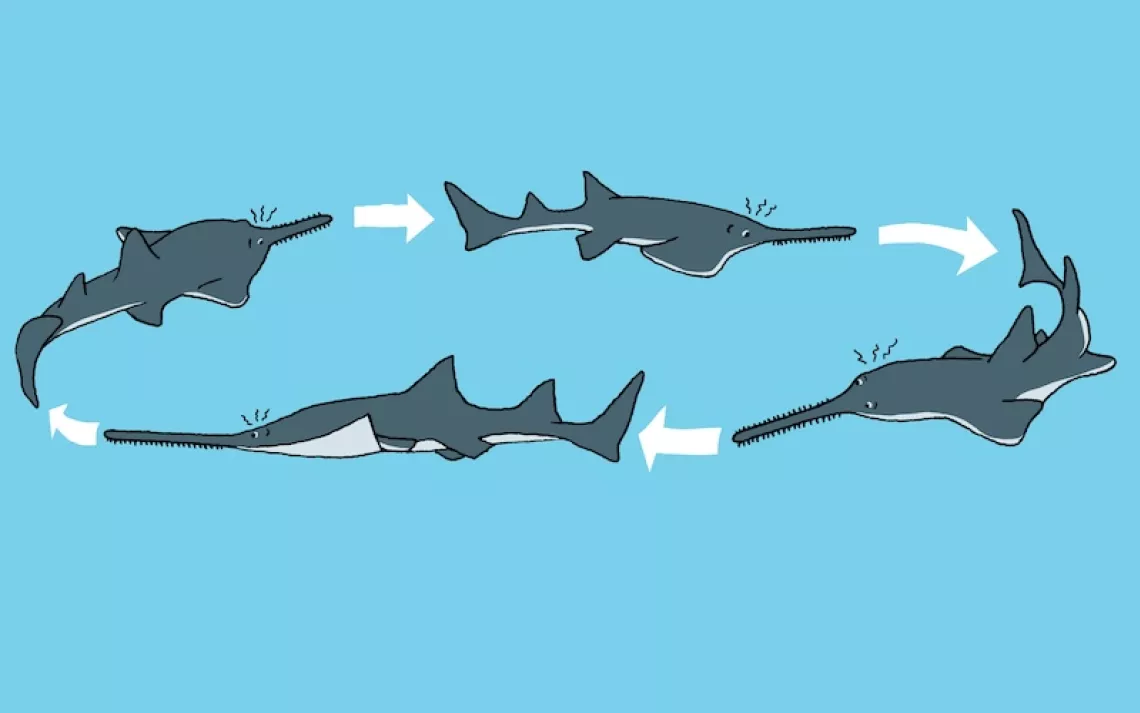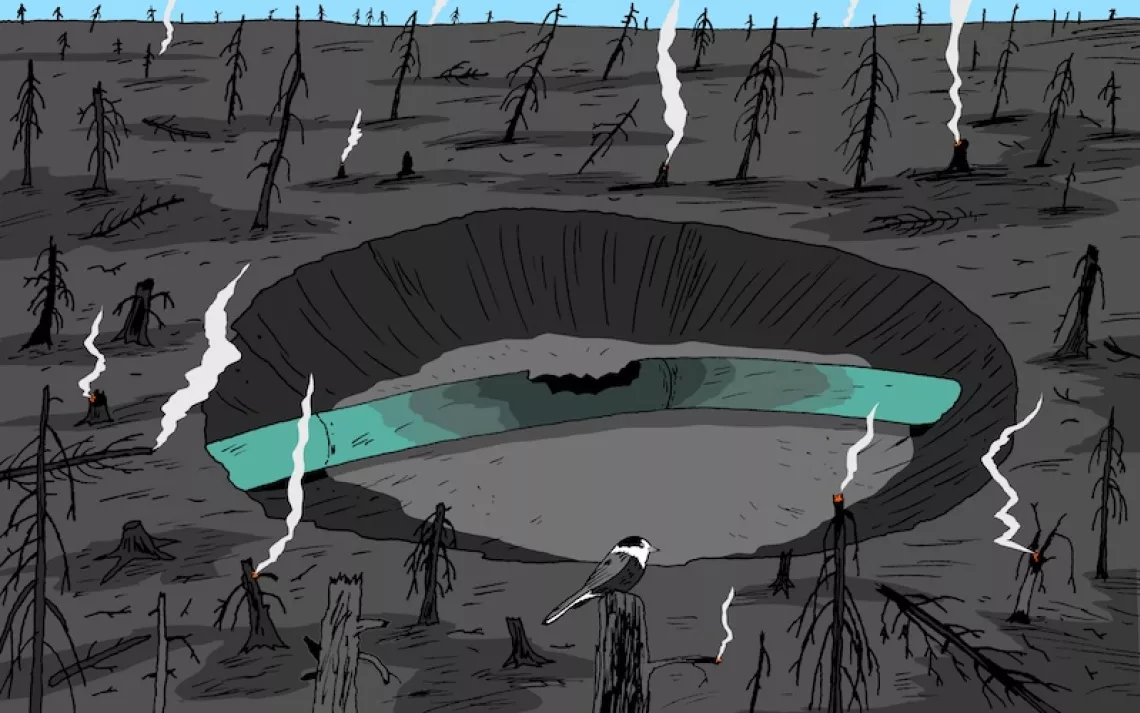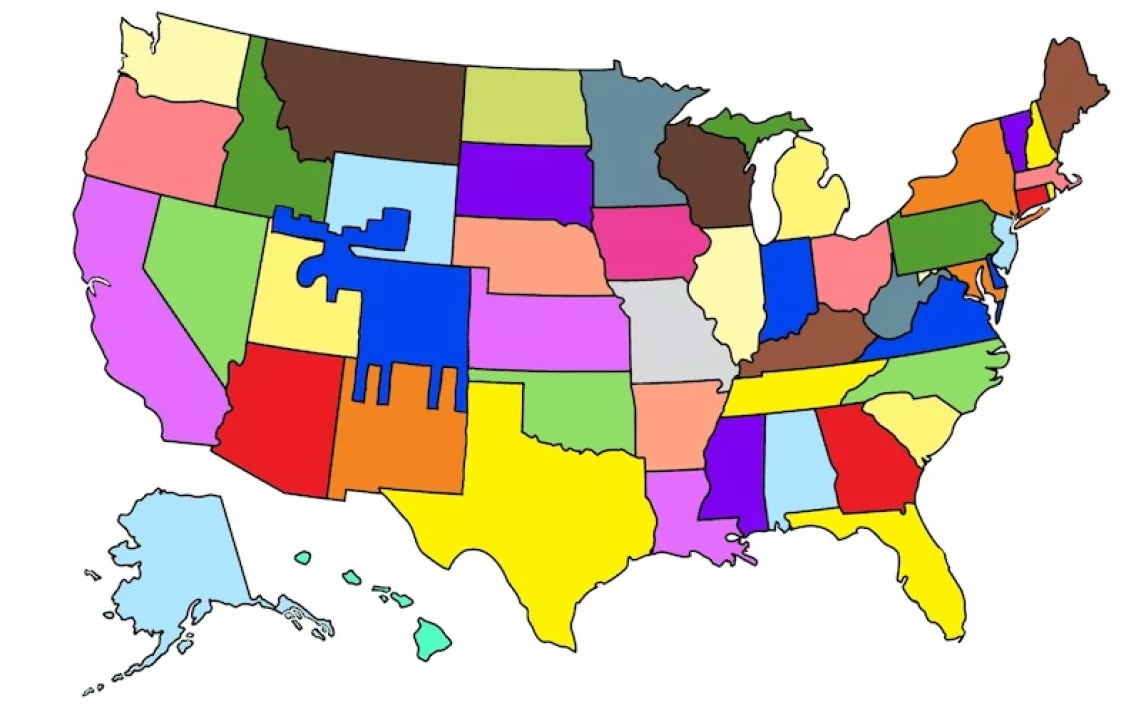How Lyme Disease Turned Me Into a Climate Activist
I learned the hard way how climate change makes the outdoors more dangerous

Illustration by nadia_bormotova/iStock
It’s Friday afternoon, and I’m scrolling through my phone. But I’m not on Yelp looking up a restaurant for dinner, or on Facebook checking out fun weekend events in my area. Everything is closed anyway. Instead, I’m on Instagram browsing through the posts tagged #fridaysforfuture and wishing I could get out of my apartment and hit the streets in protest.
In the pre-coronavirus era, before in-person gatherings ground to a screeching halt, I was such a frequent participant in climate strikes that my homemade protest sign (“Save the forests. Save the people. Save the planet. There's no plan B!”) hung taped to the door of my Brooklyn apartment, ready for me to grab on my way out of the house as I headed to yet another rally or march near the United Nations in Manhattan.
Last September, on a global day of action, I wedged my body between the throngs of people—many of them high-school-aged or younger—who gathered in Battery Park to listen to Greta Thunberg warning us that our house was on fire and that world leaders weren’t doing anything to save it. All through the winter, I logged countless hours hunched in front of my computer making calls and sending texts for Bernie Sanders, whose Green New Deal was the most substantive political effort to address the climate crisis that I’d seen. Since mid March of this year, when the lockdown orders went into full effect in NYC, I’ve moved my protest activities online, taking organizing courses with the Sunrise Movement and virtually attending the monthly meetings of my local chapter of the Democratic Socialists of America.
On a daily basis, global warming and the environmental destruction it has wrought consume my thoughts. But I wasn’t always this way. A white, private-school-educated woman in my mid-30s, I've been fairly apolitical my entire life. Most opportunities have been handed to me on a platter, and until recently, I went through life as a generic “liberal,” voting blue in elections but otherwise mostly ignoring the political dialogue.
All of that changed at the end of 2018, when I was diagnosed with late-stage, progressive Lyme disease. The year preceding the diagnosis was the worst of my life: a spiral into rapidly declining health that eventually left me housebound and almost completely bedridden. The multi-systemic bacterial infection had attacked my joints, leaving them creaky and achy and caused unrelenting chronic fatigue. I would sometimes sleep for up to 20 hours a day. The illness also left me severely cognitively impaired, but as I began to treat it and started my slow recovery I, a journalist, began to read everything I could get my hands on about Lyme. Why had this happened to me? And how was it affecting others?
Although I didn’t remember a specific tick bite, I knew with some certainty that I had been infected in New York’s Catskill region north of the city, where I frequently escaped the oppressive heat and humidity of downstate summers. Two of my closest friends had family homes in the bucolic, wooded region, and on weekend trips we’d hike through dense stands of trees and romp through tall meadow grasses. As natives of the northeast, we were all tick-aware and would scan each other’s bodies after outings. Each summer, the number of crawling arachnids we had to pluck off our clothes and bodies multiplied, from just a few each season to several each time we left the house.
In Lyme: The First Epidemic of Climate Change, author Mary Beth Pfeiffer details how rising global temperatures and the destruction of natural habitats have created a perfect storm for the spread of tick-borne disease. On a warmer planet, she writes, the tiny arachnids that disseminate Lyme can survive—and thrive—in environments that were once inhospitable; and, in an increasingly urbanized world, the food chain is disrupted, leaving too few predators and too many small prey animals who host the ticks and accelerate their proliferation. The year 2019 was the second-hottest year on Earth on record, and the Catskill region, like so many once-wild areas of the country, has seen an increase in development over the past few years.
The result of these global trends is that many more outdoorsy Americans—and, increasingly, Europeans—are crossing paths with ticks and contracting difficult-to-test, difficult-to-treat bacterial illnesses. By the end of 2020, it is estimated, close to 2 million Americans will suffer from the misunderstood "chronic" type of Lyme that has defined my life for the past two years.
In the absence of substantive measures to curb climate emissions, we can expect temperatures to continue to climb. Urbanization is increasing exponentially all over the world, so that natural environments and the balance in which their flora and fauna live will become more disrupted. Ticks will continue to spread in this very unnatural world—but the arachnids might actually be the least of our worries. An even bigger threat will come from mosquitoes, which, as author Timothy C. Winegard explains in his book Mosquito: A Human History of Our Deadliest Predator, are flourishing at higher elevations and at more northerly locations than ever before, spreading an unprecedented number of transmissible illnesses such as Zika, malaria, and dengue.
Afflicted by a chronic illness that changed the course of my life and from which I’m slowly but surely recovering, I can't help but envision an apocalyptic future in which most of the people who surround me will also fall victim to a disease that they contract simply by going outside. These thoughts about the threats posed by the world outside our doors sometimes kept me up at night even before the outbreak of the novel coronavirus, which, experts note, is the result of deforestation and humans coming into closer contact with wild animals than we ever have before. Now, the dystopian vision of lives lived indoors feels even more real.
In many parts of the country these days, to safely venture into nature requires preparation and forethought: the slathering on of repellents, the layering on of clothes, and rigorous full-body inspections once returning home. This is not the way things are supposed to work. When I learned, through my experience with infectious disease, how far human activity has tipped the scale away from the careful balance nature finds when it’s left alone, I became radicalized. I started reading independent media. I started poring over the climate change data. I became aware of the extent to which unchecked corporate greed fuels environmental destruction and I felt rage toward the governments that prop up the corporations. Lyme made me an activist, and there’s no turning back.
I will continue to participate in movements that pressure governments to create greener policy and to volunteer and vote for progressive politicians. But I worry that fellow activists focus too narrowly on the very visible effects of climate change—such as flooding and uncontrollable fires—to the exclusion of the very real, and very scary, threat of a future plagued by ubiquitous, hard-to-treat infectious diseases as well as novel viruses like COVID-19. Hiking, climbing and exploring the world’s wild places are already high-risk activities, and they will only become more dangerous in the coming years. I still love the outdoors, but I long for the carefree days of romping through the woods and rolling in the grass without having to worry about contracting a disease. In the hopes of someday returning to those times, I organize to defend our planet and to help restore a world where we live in harmony with nature, not discord.
 The Magazine of The Sierra Club
The Magazine of The Sierra Club






